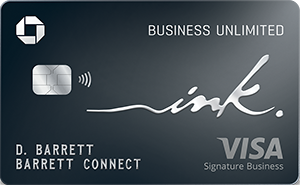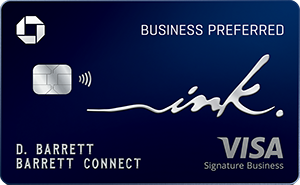Launching a business on a budget might sound like a tall order. But you can get the ball rolling for just $100 or less. This guide will walk you through the steps to turn your small investment into a potentially lucrative venture.
Step 1: Brainstorm and research (Cost: $0)
Every great business starts with a great idea. Focus on services or digital products that require minimal upfront costs. Consider what skills you have or can quickly learn, and research market demand using free online tools like Google Trends.
Key actions:
- Identify your skills: What can you offer that people might pay for?
- Market research: Look for gaps in the market that match your skills.
- Make a business plan: Outline your business idea, including goals and strategies as well as the financial implications. Map out your finances and set goals to help you stay on track.
The cost here is your time. Spend it wisely to validate your idea before moving forward.
Step 2: Establish your legal framework (Cost: $0 – $20)
Think about what type of business structure will work best for you. Two common options are LLCs or sole proprietorships. There’s very little paperwork involved in setting up a sole proprietorship, but an LLC may suit your needs better. If so, it doesn’t have to break the bank.
Unlike a sole proprietorship, an LLC draws a legal line between you and your business. This separation not only protects your personal assets from business liabilities, but can also offer potential tax benefits.
Key actions:
- Choose a business name: Keep it simple and descriptive.
- Business registration: Find out what you need to do to register as a sole proprietor or LLC in your state. Online services like LegalZoom don’t charge anything to set up a basic LLC. However, registration fees can range from $50 to $300 depending on the state.
- Open a business bank account: Many banks offer specialized accounts designed for small businesses, some even at no cost. These accounts can help you separate your personal and business finances more effectively, which is crucial for financial clarity and can simplify tax reporting. Check out our best checking business accounts.
Ensure that your business has a legal structure, even if it’s just as a sole proprietor, which can often be done at little to no cost.
Business Credit Card Comparison
Consider these business credit cards that offer a convenient and efficient way to separate personal and business expenses, simplifying accounting and tax reporting.
Additionally, business cards can provide valuable perks such as rewards points, cashback, and expense tracking tools, enhancing financial management and the potential to help save money in the long run.

Ink Business Unlimited® Credit Card |
Earn $750 bonus cash back Earn $750 bonus cash back after you spend $6,000 on purchases in the first 3 months from account opening. |
Earn unlimited 1.5% cash back on every purchase Earn unlimited 1.5% cash back on every purchase made for your business |
Purchases: 0% Intro APR on Purchases, 12 months Balance Transfers: N/A
Regular: |
|

Ink Business Preferred® Credit Card |
Earn 100,000 bonus points Earn 100,000 bonus points after you spend $8,000 on purchases in the first 3 months from account opening. |
Earn 3 points per $1 in select business categories Earn 3 points per $1 on the first $150,000 spent in combined purchases on travel, shipping purchases, Internet, cable and phone services, advertising purchases made with social media sites and search engines each account anniversary year. Earn 1 point per $1 on all other purchases-with no limit to the amount you can earn. |
Purchases: N/A Balance Transfers: N/A
Regular: |
Step 3: Branding on a budget (Cost: $20)
Your brand’s first impression counts, but it doesn’t have to cost much.
Key actions:
- Design your logo: Use free tools like Canva to create a simple logo.
- Set up a basic website: Use free versions of WordPress or Squarespace; consider spending around $20 per year on a domain name for a more professional presence.
- Social media accounts: Set up free accounts on major platforms like Instagram and TikTok to promote your business.
Investing about $20 in a domain name while using free tools for other branding elements keeps costs low but increases credibility.
Step 4: Networking and marketing (Cost: $0 – $20)
Use your existing networks and free marketing channels to spread the word about your new small business.
Key actions:
- Word of mouth: Ask friends and family to share your business.
- Social media marketing: Create content that promotes your services or products.
- Flyers and local ads: If applicable, use a small part of your budget to create basic marketing materials. This could set you back about $20 depending on how much you print. Or, consider email marketing software like MailChimp with free plans for small businesses.
Focus on free promotional methods initially. If you opt for printed materials, keep the design simple and the quantity manageable within your budget.
Business ideas under $100
If you’re looking for a way to bring in some extra cash, choose a business that aligns with your skills and passions. Initial costs can be extremely low, especially for service-based businesses or online platforms that charge fees on sales rather than upfront.
Here are some business ideas that you can start with minimal investment:
- General freelancing (e.g., virtual assistant, writing, tech support): Use platforms like Upwork to offer your services. It’s free to set up a profile, with a 10% freelancer service fee on earnings.
- Graphic design services: If you’ve got a good eye, use free software to start designing for small businesses. The only real cost is a fee if you want your own domain.
- Tutoring or online courses: Share your expertise in a specific subject through platforms like Udemy or Teachable. It’s free to start, though you’ll pay platform fees on your sales.
- Seller on Etsy: Turn your crafting hobby into a business. It costs $0.20 to list your first item, with additional fees upon sale.
It is more than feasible to start a business for under $100. It’s a testament to your entrepreneurial spirit and creativity. Use these steps to launch your venture strategically with minimal financial risk. Focus on leveraging free resources and reinvesting your earnings for growth. Your journey from small startup to successful business is just beginning.
Alert: our top-rated cash back card now has 0% intro APR until 2025
This credit card is not just good – it’s so exceptional that our experts use it personally. It features a lengthy 0% intro APR period, a cash back rate of up to 5%, and all somehow for no annual fee! Click here to read our full review for free and apply in just 2 minutes.
